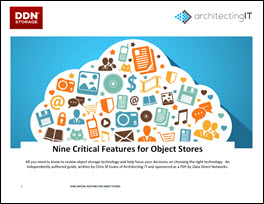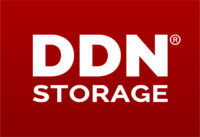
Object storage is a relatively new market segment that has continued to grow steadily and is starting to find more reasons for adoption. For the uninitiated, object stores are used to hold large volumes of unstructured data, where each “object” is essentially a file with no specific format (also called a binary file). Object stores can hold any type of data, from small objects that can be human readable files to media (audio and video) or other industry-specific formats (oil & gas, medical imaging and so on).
The benefit of using an object store over traditional storage is multi-fold. Block-based systems (e.g. Fibre Channel and iSCSI) don’t scale out well and have no real understanding of the data being stored. They are “dumb” block devices that serve content with low latency and high granularity. File systems place some structure onto data, putting file objects into hierarchies (folders/directories) and attaching metadata to those objects. However, the metadata is typically only based on the information needed to store the file (time created, time updated, access
rules).
Object stores represent a simpler, more scalable solution and one that is easily accessed over standard web-based protocols. To learn more about Object Stores download this guide.
All information that you supply is protected by our privacy policy. By submitting your information you agree to our Terms of Use.
* All fields required.




